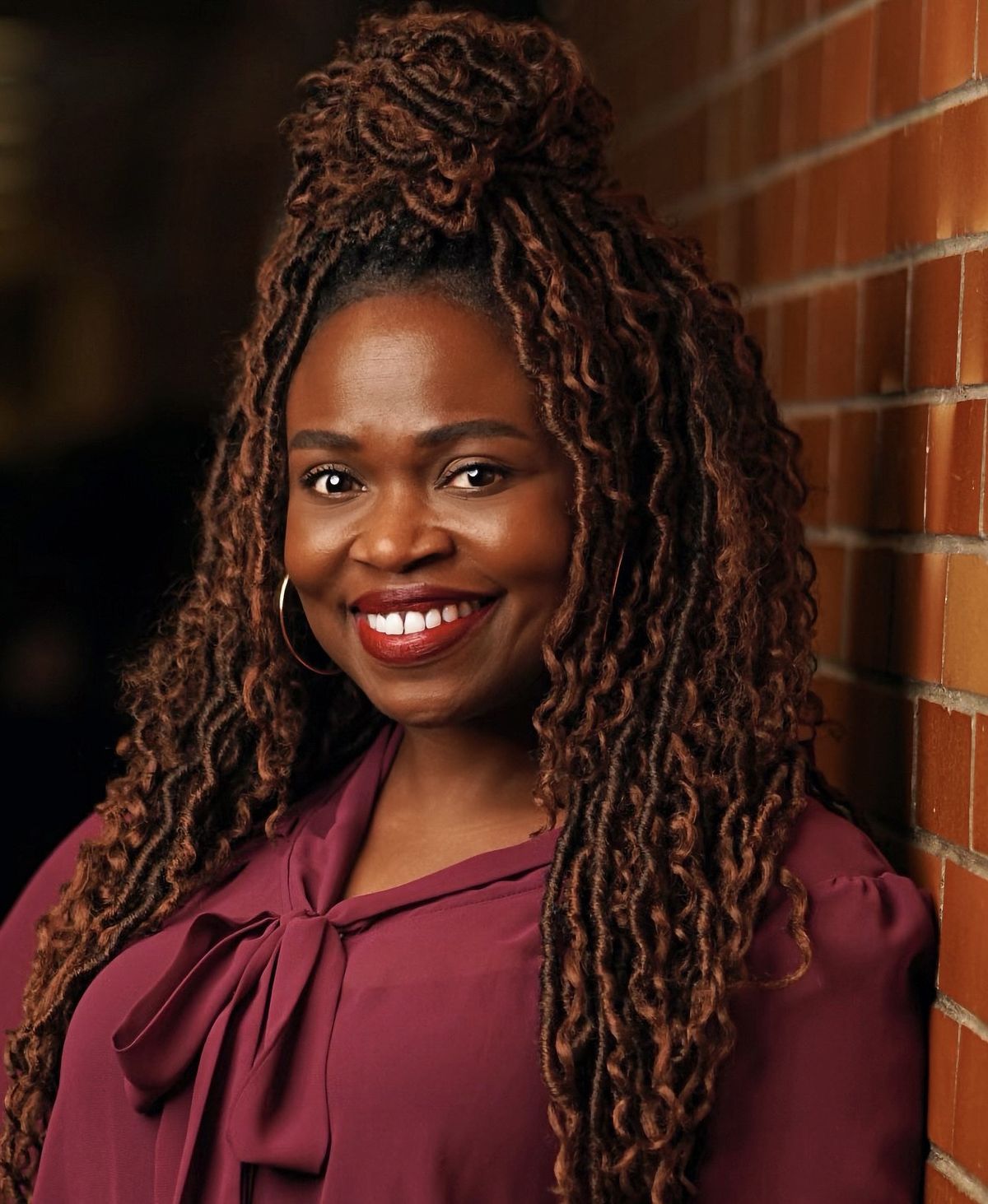Candidates to replace longtime incumbent on Mead School Board differ on funding, diversity issues
Jaime Stacy, left, and Jennifer Killman are running for Mead School Board District 3 in the November 2023 election. (Courtesy photos)
Mead School District voters have a choice in November to either elect a progressive focused on inclusion of students of all backgrounds or a conservative concerned that state-required diversity standards may harm the academic performance of students.
Though Jaime Stacy and Jennifer Killman are both mothers with children in Mead schools, they represent a stark contrast in their pursuit of an open school board seat. Whoever wins will replace the retiring Bob Olson, who was first elected in 1985.
The two also differ on whether they support the district moving forward with a new levy. Mead’s levy, which was approved by voters in 2021 and covers about 12% of the district’s budget, expires next year. The levy pays for extracurricular activities, athletics, staff to lower class sizes and other employees such as nurses, among other items. Stacy said she strongly supports moving forward with a new levy. Killman said she is undecided.
Killman is an X-ray technician employed at Providence Sacred Heart Medical Center and has three sons who attend Mead schools.
Stacy has kids attending Mead schools and she has previously served as president of the Shiloh Hills Elementary parent teacher student organization. She works for Spokane Public Schools as a school and community specialist.
In this job Stacy “creates connection between schools and the community,” she said. Even though this role is not in the classroom, Stacy describes herself as an educator, citing social justice trainings she conducts and summer music production classes she teaches. Stacy is also cofounder of mentorship nonprofit Strong Women Achieving Greatness.
If elected, Stacy would be the first Black woman elected to serve on the Mead School Board. The need for that representation became clear to her as the board last year considered a policy banning critical race theory from Mead schools. Though the board shot down board member Michael Cannon’s proposal in a 2-3 vote, Stacy found the policy and the discussion around it “disturbing” as she sat in the meeting hall as a parent. She said, the “ill-informed” policy used “buzz words” to “scare people” even when the theory is not being taught in the district.
In recent years, critical race theory has become associated nationally with parental concerns over the way the history of racism is taught in public K-12 schools. Rather than a framework used at these levels, critical race theory is a mode of legal analysis used in collegiate and post-graduate studies positing race as a socially constructed means to exploit people of color.
Though Stacy did not decide to run until Olson encouraged her candidacy after the September 2022 race theory discussion, the meeting showed her the need for diverse representation on the school board.
“I began to look at our board. There was not a single person of color on the board. Not one,” Stacy said. “I believe that me being on a school board – it will put them in proximity to someone that they can talk to and ask questions without fear of judgment. Because I’m not there to judge you. You can only engage according to your own life experience, so I could share with them my experience, and we can have a conversation that we need.”
Killman said the possibility of critical race theory being taught in Mead schools is a legitimate concern and one that may necessitate board policy to guard against it.
“That’s been a hard topic for a lot of the community and just our nation in general to kind of swallow this idea,” she said of critical race theory, which she does not yet believe has become entrenched in Mead schools.
“There are some concerns with parents and the community that these might slowly creep in, and there have been some isolated incidences of (critical race theory) being taught but I think largely our district is standing on morality, and we need to bolster that a little bit,” she said.
Asked if she would vote for Cannon’s policy if it came up for another vote, Killman said she would if the policy was “written in a more general way” – covering a range of controversial issues rather than critical race theory specifically.
A priority for Stacy is to “promote inclusion” on the board and focus on anti-bullying and anti-harassment policies. Mead has had “deficits” in making every student feel included, she said.
“If you look at these demographics, you can see that Mead is becoming more diverse. Representation matters where it matters. So where is it gonna matter? It’s gonna matter in your classrooms,” Stacy said. “Inclusion goes hand-in-hand with making our students feel safe. Because when you create a sense of belonging in a space and you foster that inclusive thinking, we are less likely to want to cause harm to another individual.”
Parents should not fear diversity, equity and inclusion policies, Stacy added.
“People get scared and people think that means my child is going to feel shame. Shame is never to be used for social justice. I stand by that. I say we have to do a better job of removing the shame and replacing it with discernment. So what does that mean? Critical thinking. What is your intent?” she asked. “It bothers me tremendously what some people say about (diversity, equity and inclusivity policies). I do not believe that your white skin makes you inherently racist. And I do not believe that children should be taught that. Just like they should not be taught to hate someone who doesn’t look like them.”
Stacy said her race may be a factor for some voters in the campaign.
“Some people see me and they see agenda. They see CRT,” she said, using an acronym for critical race theory. “However, once people know me, they understand what I am about. I’m about inclusion. I’m about representation for everyone.”
Killman believes diversity, equity and inclusion standards, especially those mandated by the state, may be a contributing factor to lowering test scores in Mead and elsewhere.
While not necessarily disagreeing with the content of these policies, Killman believes they take away from instructional time in the classroom
“This diversity, equity and inclusion or social emotional learning – I don’t see that the students are doing great with these types of learning. So I think we need to kind of get back to our foundations,” she said.
She also believes the terms used in these standards are “modern terms that not a lot of people in our community appreciate.”
“Our generation has already learned and has been teaching our children, respect for differences, equality for all and being inclusive. Educators need the time to use their expertise to teach their students and not be indoctrinated with the rebranding of words to take to their classrooms. It’s just splitting hairs bringing in the rebranding of words and takes time away from the basics,” she said.
If elected, Killman hopes to “pull our vision back to truthfulness and morality and patriotism for our community and for our students.” In her view, school board members should act as representatives of parents. She said some of the longtime incumbents on the board have failed to do that.
“COVID really kind of showed me where some of our directors are standing with parents and there are some directors that … haven’t stood with me as a parent,” she said. While praising Mead’s role in being one of the first schools to bring students back to school during the pandemic, she worries some members did not do enough to follow the directives of parents.
“Parents are the primary stakeholders, not organizations and government agencies,” Killman said. “There’s a lot of pressure from outside organizations in the state to have a say in what our kids are learning and how that goes. But I think that we really need to focus on listening to the parents that are invested into their children.”
Stacy agrees parents sometimes “don’t feel like they have a seat at the table.” But she argues the school board should “make the table larger” and not pit different stakeholders in the community against one another.
“Parents’ wants matter. Educators have to have that awareness and honor that fact. But parents also have to understand that teachers have an obligation to teach,” Stacy said.
Both are concerned with the financial health of the district. Stacy said she would focus on creative ways to “use funds in a better way” and ensure no more budget cuts occur. Killman said cuts are possible if the school does not live within its means, though she would hope they would be avoided. If cuts were required she would look to extracurriculars.
“As a mother of three sons I have to operate within the budget I have. If I can’t get them athletic shoes or I can’t get them a new backpack. I have to tell them no,” Killman said.
Asked if she would support renewal of the school’s levies when they come up for a vote next February, Killman said she was unsure and needed more information from the district’s administration before supporting taxpayer spending.
“I would like detail about how we’re going to use the funds and how our district is going to involve our community in a way that they will support the levy,” she said.
Stacy will support the levy renewal.
“Levies are for learning. And I love learning,” Stacy said.
Early on in the campaign Stacy was endorsed by left-wing nonprofit Fuse Washington, which helps progressives in elections across the state. The endorsement has come under scrutiny by her opponents in part because it described Stacy “organizing” against “MAGA extremists” in the fight over Cannon’s failed critical race theory policy.
Stacy said she was invited by Fuse to participate in their endorsement process and was not aware of the endorsement’s description of her. Upon reading the endorsement, she asked Fuse to rewrite it, which they subsequently did.
“I do not believe ‘MAGA extremists’ is an accurate description. Absolutely not,” she said. “I also did not organize anything. (Fuse) gave me credit for something I didn’t do.”
Asked if she self-identifies as a progressive, Stacy said she did.
“If you would align progressive with someone who believes that all humans deserve to feel like they belong, then yes,” she said. “If people want to say that’s progressive, then I would say ‘Yeah, I’m progressive because I believe that everyone deserves a seat at the table. Love always wins,’” she said.
Asked if being a self-declared progressive might hinder her in the race, Stacy said she would “not bring bias” into her role as a public official.
“If you want to have a conversation with me about my values, and my values seem a little more extreme than what yours are, that’s okay. That’s not a reason for me to be in conflict with you. But understand that’s not what will guide me as a school board member. I am nonpartisan,” she said.
In addition to a $1,200 donation from Fuse Washington, Stacy has received a $500 donation from the Washington State Central Democratic Committee.
Killman is concerned by the Fuse Washington endorsement and called her opponent “too liberal” for the Mead School Board.
“What troubles me about the Fuse endorsement is that I see the progression to undermine American values of truthfulness, humanity, dignity, meritocracy, love and discipline,” she said.
Killman freely identifies as a conservative, has been endorsed by the Spokane GOP and a number of local Republicans, including Congresswoman Cathy McMorris Rodgers. The conservative Christian group, We Believe We Vote, lists her as “very well aligned” with the group’s values, which includes opposition to same-sex marriage and to government-based assistance programs for the poor. Asked if her endorsements should give voters any pause, Killman said she will try to be nonpartisan by “listening and collaborating with stakeholders” but she also believes it is important to know a school board member’s ideological background.
“In today’s world, I think it’s really important for people to be able to see where somebody’s values ultimately lie. And a lot of times that can be who’s representing you and who’s endorsing you,” Killman said.



